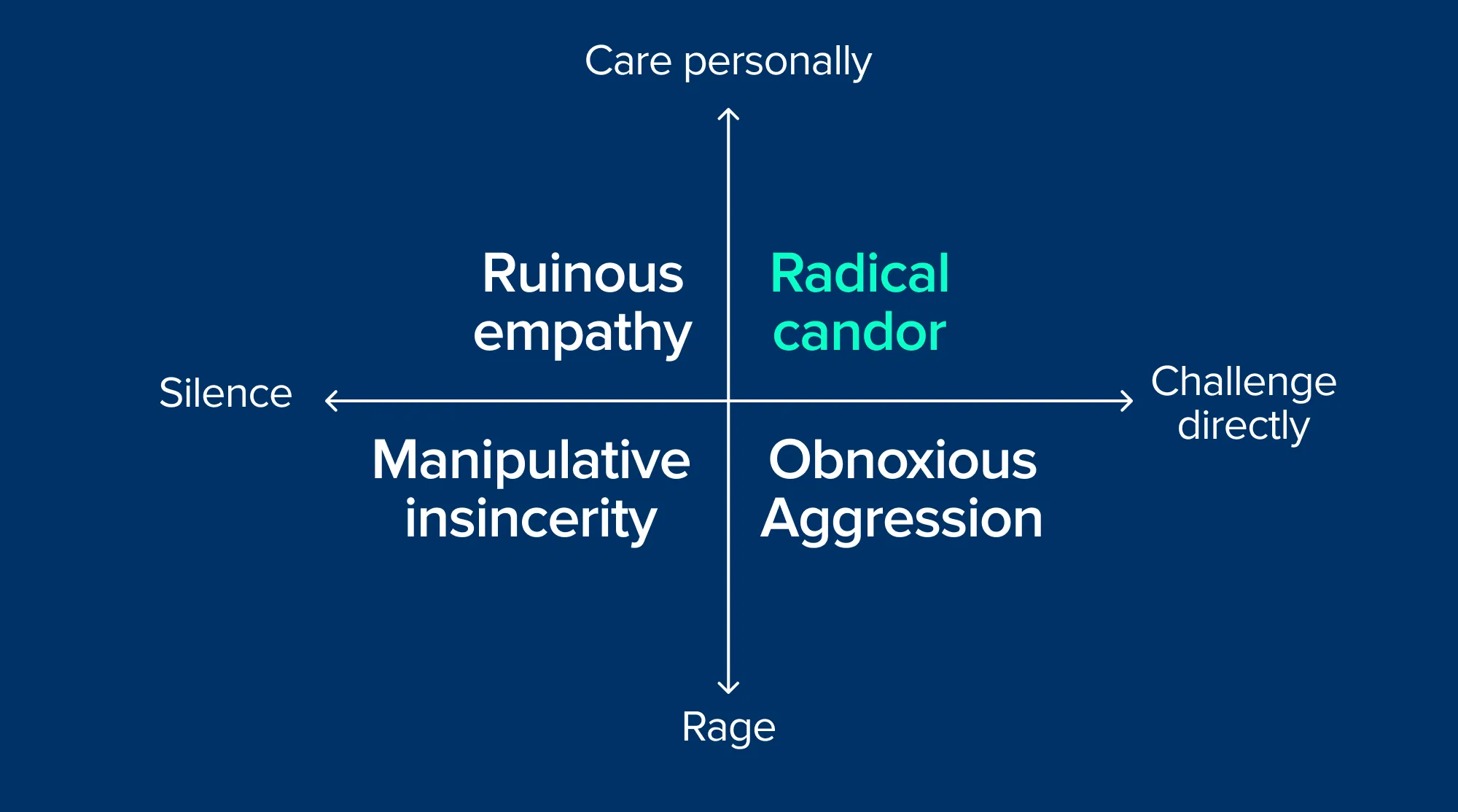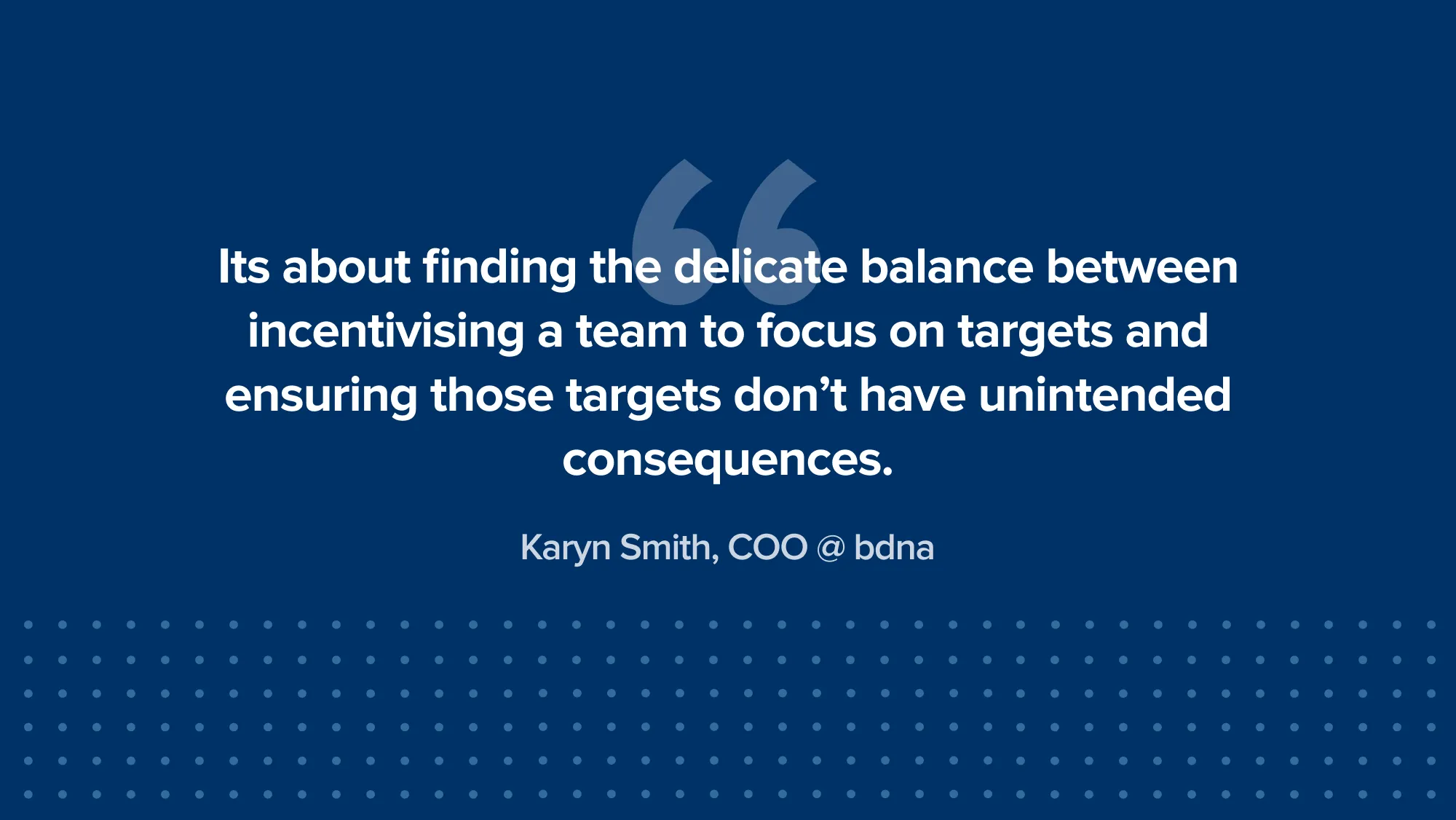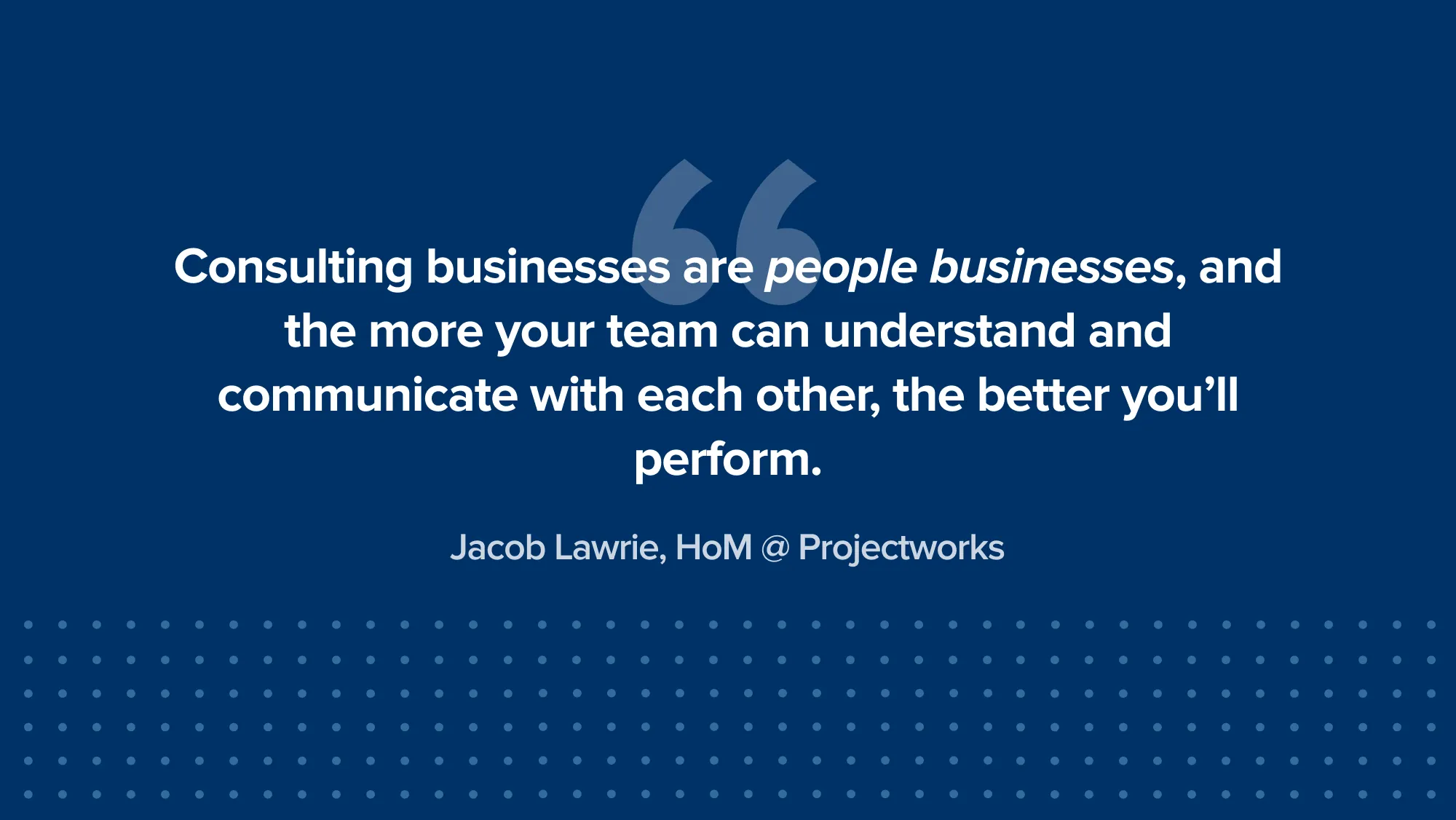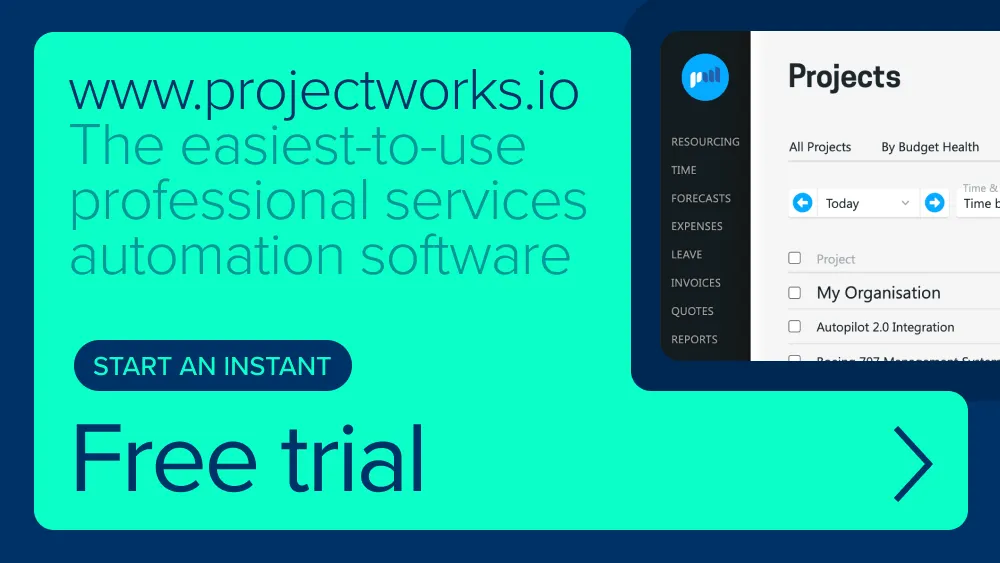Building a culture of excellence: empowering your team through leadership

Create a thriving team through empowerment, community building, and performance.
Jacob Lawrie, our Head of Marketing, has a strong background in leadership and building cultures of success. He is passionate about the consulting industry and supporting them in fulfilling their purpose.
Karyn Smith, who is Chief Operating Officer at bdna. She has over 30 years of experience in technology, projects, leadership, and driving operational excellence.

As services firms grow it’s inevitable that new layers of leadership are required to support operating at your new level of scale. It’s a great problem to have – new business is coming in, and your firm is growing as you’d planned. At the same time it can prove challenging to ensure that your new project or portfolio leaders deliver to the standard you and your clients expect.
It’s common knowledge that recruiting the right people (and particularly leaders) for consulting firms is exceptionally difficult. The great ones are few and far between, and when you do find them it can be difficult to compete with the packages some firms are willing to offer. Often the most effective approach is to raise leaders up from your team once they’ve demonstrated they’re ready for the challenge. The additional value in this is that through investing in their growth you improve your chances of creating fiercely loyal employees.
Whether you hire externally or promote internally, it’s critical that these transitions in scale are approached thoughtfully to scale profitably while maintaining the quality of your client experience. The key is ensuring your new leaders are empowered to take ownership of what it takes to be successful in their roles.
Clearly communicate what good looks like, and measure it
Provide KPIs or other forms of measurable success for your new leaders, based on a combination of historical performance and your future expectations. Examples are margin, utilization, customer satisfaction, or budget management.
Some consulting firms incentivize performance (financially or otherwise) based on meeting or exceeding targets. Alongside these, share openly your experience of what it takes to meet these measures of success, and create a mutual understanding of the common challenges that they should expect in their leadership role – whether that's on a project, a portfolio, or a team of people. You can then center ongoing 1:1 conversations with them around progress towards these objectives, overcoming challenges they face, and make a point of celebrating the wins along the way. This type of communication helps create trust between leaders, built on radical candor.

Karyn Smith, Chief Operating Officer at leading consulting and specialist software business bdna shares below that incentives need to be managed thoughtfully and reviewed regularly in order to ensure they’re creating the outcomes you seek:
“Its important to think through carefully what behavior might be created when setting a KPI - the target needs to feel achievable, otherwise they can become a dis-incentive, it’s got to include some element of stretch or there’s no point in having one, but most importantly, its about finding the delicate balance between incentivising a team to focus on targets and ensuring those targets don’t have unintended consequences. The classic example is incentivising individuals for sales or for personal heroism and thereby creating internal competitive culture, which distracts from being focused on customer experience or service. Consider KPI's carefully –just putting some in place isn't enough. Be clear about the behaviour you're trying to drive, road-test the KPIs and properly review them over time”

Smith also suggests that monitoring organizational KPIs that reflect a more holistic view of team wellbeing is also crucial for understanding the health of your business, particularly through periods of rapid growth:
“Shared clarity on what wellbeing looks like is important to establish across your leadership team. It doesn’t have to be complex either – standard HR statistics can help. Consider regular reviews of staff turnover, unplanned leave usage, team sentiment (through regular surveys), increased use of EAP services as well as usage of professional development budgets are all KPIs you can consider monitoring. These add another dimension to the standard suite of Finance monitoring that exists in most organisations, and can be more of a lead indicator that something needs attention.” Smith says.
Model the behaviors you seek
As company leaders we need to be very purposeful about the behaviors we model to our teams – they are often far more influential than any directive we communicate. If what we ask or expect of our people and how we personally act on a daily basis don’t align, then we won't achieve the outcomes we seek. Examples include being visible and vocal about your own objectives and progress towards them, communicating with your teams the ways you expect them to communicate with your clients, following through on commitments you make to your teams, punctuality, calling out and celebrating achievements together with your team… the list is infinite, but intentionality underpins every scenario and sets the expectation of what good looks like for everyone around you.
Modeling behaviors include the usage of the tools you use to monitor the KPIs you’ve established, as bdna’s Smith shares:
“You have to ensure that leadership and governance forums are looking at data directly out of the tool – no more complex excel spreadsheets where no-one is really sure where the underpinning data comes from or whether its up to date! It means getting your leadership teams comfortable navigating your PSA software and having them drive wider team adoption and data accuracy through consistent use of the tool”

The C-word
A culture built on principles like growth, vision, and achievement can create healthy competition for both new and existing leaders in your business. It amplifies the effect that you or any one person could have on another and creates a network effect where everyone challenges each other to perform better, so they can enjoy succeeding together. It embeds success into the DNA of your organization and deeply influences the mentality of how your leaders come to work each and every day. Examples of how to foster this kind of culture could be celebrating achievements visibly and meaningfully, investing in the professional development of your people, and having transparent and direct conversations about things that aren't going well and what can be done about that amongst your leadership teams.
Bdna’s Karyn Smith shares that leaders shouldn't feel as if they need to have all the answers about what their culture should be and how to foster it:
“Engage your team members in conversations around culture. Give them opportunities to contribute towards your culture framework, as well as any activities which might reinforce it. This gives them greater ownership of it as a team, and shared accountability to live up to the principles you establish”.
The coach approach
As your new leaders take ownership of their areas, your role as their leader can shape quite dramatically. Coaching becomes a core part of how you’ll facilitate your people realizing the potential they have within your business. Identifying key coaching moments are key to enabling their growth as professionals and through that the growth of your firm.
No one team member will be the same, however, you can experiment with different approaches to see what works for them. Development plans, collaborative working, regular 1:1s, strengths assessments, and mindset development are all tactics you could employ to coach your emerging leaders. Other things you can do to enable yourself is to study coaches in other fields such as high-performance sports, or seek out your own network of people you trust to both challenge and support you in the areas where you may need it. We’re all human – even the greatest business leaders on our planet have their own go-to people.
Tools that are fit for purpose
Contemporary PSA software is essential to provide your emerging leaders with the visibility of project and business performance metrics they’re responsible for. Together with historical performance, they can use powerful projections of future performance to see upcoming risk and make meaningful interventions to improve their chances of achieving their objectives. This might mean better management of budget burn through projections based on future resourcing and expenses, or powerful reports that let your finance team track WIP carefully and take action with your project leaders to remove financial risk for your business.
Consulting businesses are people businesses, and the more your team can understand and communicate with each other, the better you’ll perform. PSA software enables you to track your consultants' capability through customizable fields that capture strengths, experience or anything else you and your team need visibility of. This helps to democratize knowledge about who’s got more or less experience in different areas across your team. New project leaders can then use that insight to build effective resource plans which maximize the potential of project success, as well as easily see who is over or under utilised. In the words of bdna’s Karyn Smith:
“You need to be able to easily see where the pressure points are – knowing who is going to be over utilised before it happens enables proactive action and conversations before we hit the hot week, not 4 weeks later when the in-demand person is exhausted."
As a consulting firm leader, you’ll also want to carefully manage who has access to what sensitive financial or personal information. A good PSA system takes care of this with ease, giving you full control of who can see and manage any areas of your business.
“You can’t manage what you can’t measure” goes the saying. In a professional services firm that especially means having a single source of truth on your key metrics. For too long, disconnected business systems have created multiple contradictory views of the same information. Together this creates confusion, slow access to important insight, and an environment that’s prone to human error. Your PSA should connect deeply to your accounting software, CRM, and other key systems to empower your team to make the decisions they’re responsible for and drastically improve your efficiency in critical areas like getting paid faster.

In summary
Good leaders understand their people and see potential that they may not even see in themselves. Great leaders take it a step further by facilitating people realizing that potential faster or more effectively than they otherwise would've.
With clear expectations, well-defined ways of working, the right tools, and a culture of high performance, your emerging leaders will have an environment that enables them to rapidly grow while establishing powerful psychological ownership of your business's success. When done well, you’ll eliminate the risk of success depending on any one person, improve your employee retention, enable your team to focus on what they need to make great decisions, and unlock a success recipe for sustainable, manageable business growth.

Related Articles

Webinar On Demand: Mega Projects & The Road Ahead for Australia’s Engineers with NGNU & Red Fox Advisory
In this live webinar with our customers NGNU and Red Fox Advisory on Mega Projects & The Road Ahead for Australia's Engineers we brought together the directors of engineering and consulting firms to unpack what's changing, what isn't, and what their firms are doing to maximise chances of success going into 2026. Below, we share key insights from the webinar.

SHIFT Conference: 2026 Predictions for Software Consulting
Projectworks hosted its first virtual conference, SHIFT, for high growth US software consulting firms looking to think strategically about how they integrate AI into their internal systems, inspire culture, and standing out in 2026. Below you can catch the replay’s and key predictions from software consulting leaders.
